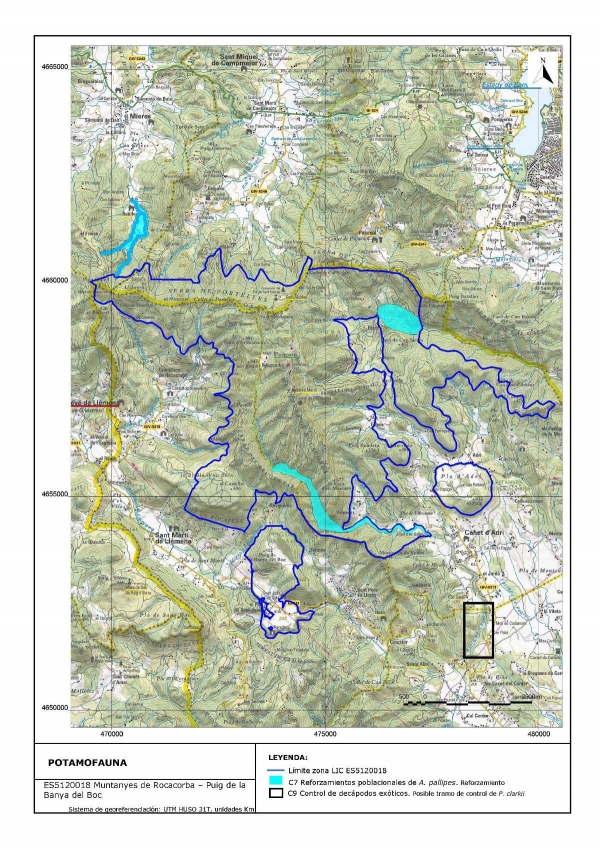Mountains of Rocacorba - Puig de la Banya del Boc
Surface: 3,426.100 ha.
The Natura 2000 area Mountains of Rocacorba (ES5120018) includes two Natural Interest Areas declared in the Plan for Areas of Outstanding Natural Beauty of the Government of Catalonia. These areas are the mountains of Rocacorba and Puig de la Banya del Boc. They are places of remarkable diversity of Mediterranean and Euro-Siberian plant communities, with a good sample of the populations of wildlife and mountainous volcanic elements of great interest.
Mountains of Rocacorba constitute the eastern Serra del Corb i Serra de Finestres, with a maximum altitude of 944 meters. The reliefs and steep cliffs arise from differential erosion of Eocene materials with alternating sandstone and marl. The space has Rocacorba interest placed in the limits of the system Transversal Selva plains, gathering a remarkable diversity of natural systems from one region and another.
Within the space, several semipermanent streams flow heading to the Ser River, a tributary of the river Fluvia in the north, which includes the headwaters of streams of Ritort and Falgons . To the east runs the headwaters of a tributary of the River Revardit Terri, and this, in turn tributary of the River Ter. To the south there are several streams that eventually converge to the river Llémena as Rissec and Riera Granollers, and Riera de Canet. In the area there are several samples of volcanic activity, notably volcano Puig de la Banya del Boc.
The working area of the project does not include the entire space LIC. Here the project area focuses only on streams and rivers, involving a very small area centered around these environments in which they live aquatic species objective of the project.
The importance of the natural populations of mountain species in Rocacorba aim of this project are Barbus meridionalisand mainly Austropotamobius pallipes where the popularion is remarkable, although difficult to quantify in terms of demography. Catalogue of threatened fauna of Catalonia (pending approval) consider endangered (its short-term survival is unlikely) this species. It has a wide distribution in Catalonia, but is very localized mainly in undisturbed small creeks and streams.
This species has also joined the project to conserve populations of White-clawed Caryfish (Austropotamobius pallipes). The precise details about the process of reproduction in captivity of Austropotamobius pallipes can be found in the corresponding protocol established in accordance with the objectives of this project. One of the factors essential to incorporate this protocol is to maintain breeding lines for each separate area of origin of the parental units. The reinforcements population will be carried out in appropriate sectors of the SCI included in the performance area of the project. About the sectors where the species has disappeared, but always within the SCI which is still present, this will enable the establishment of new populations are at least 2 in the SCI. The action executed is the reinforcement population from specimens bred in captivity.

















